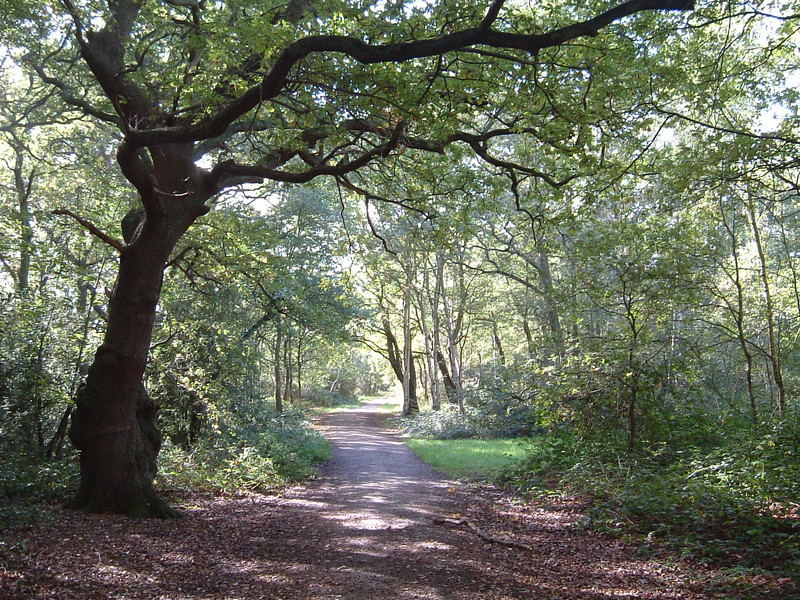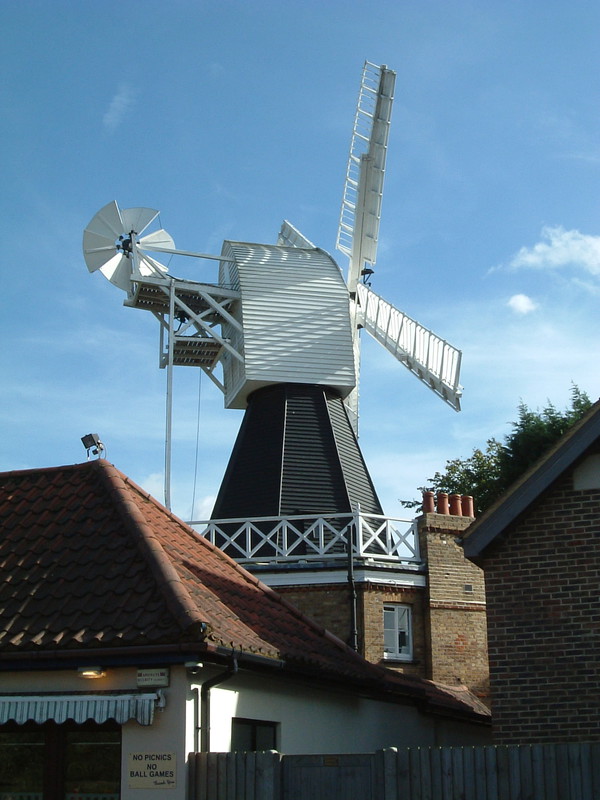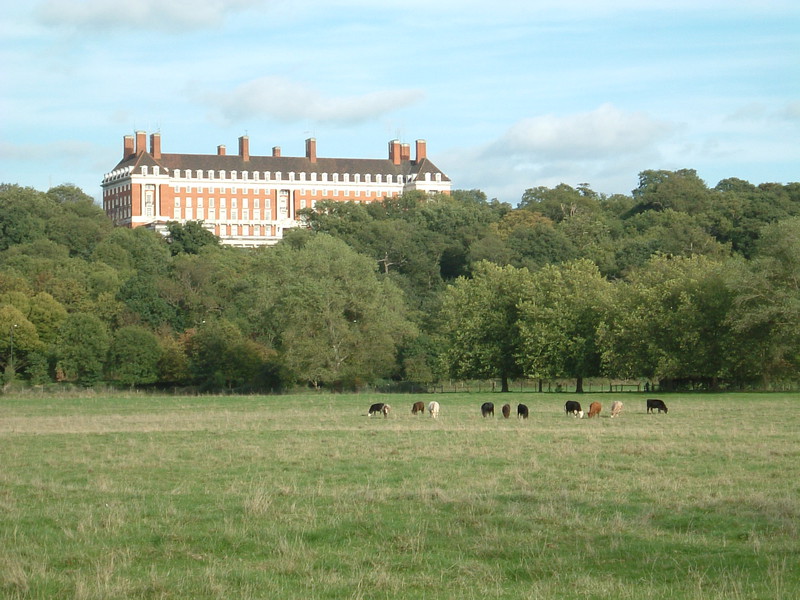
After the bland walk from Streatham to Wimbledon Park, you could be forgiven for thinking that the Capital Ring is nothing more than a poor cousin of the London Loop. This stretch from Wimbledon Park to Richmond is, however, one of the greatest day walks in the whole of Greater London, and in its entire 6.9 miles it doesn't put a foot wrong. If you only do one day of the Ring, make it this one; it really is something special.
It doesn't hang about, either. While the first few days of the Ring all contain long stretches of suburbia, it's just a few minutes from Wimbledon Park tube station to the first park of the day, and apart from a short dip back into the suburbs just before Putney Heath, it's countryside all the way to Richmond. Wimbledon Park itself is a little gem, with a placid boating lake, squawking geese and swans, and a feeling of space that belies its small size. Landscaped by Capability Brown in the mid-18th century, this is a pleasant introduction to the area, the only drawback being that it's over quickly.
But even the short suburban section that follows is delightful. Turning left out of the park, the views to the southwest are picture-perfect. OK, so you're looking out over a golf course and the landscaping is somewhat contrived, but with the spire of St Mary's church in the distance overlooking the lake and the trees framing the view from the road beautifully, it's suddenly obvious why the All England Lawn Tennis and Croquet Club based themselves here; it's quintessentially English, despite the urban setting.

This is all, of course, down to money. While the suburbs along the southeast quarter of the Ring vary in their upkeep, there's always a tangible grittiness to their housing; in Wimbledon Park, though, the veneer of cash is thick indeed. It's as if the nutritional effects of hundreds of years of affluence have seeped into the water table, nourishing the buildings and papering over the cracks that affect the rest of London. Buildings are either immaculate or being worked on by tidy builders, and I didn't spot one mouldering car or dilapidated caravan anywhere along Queensmere Road.
Instead, this is the domain of the mother of young children, judging from the number of prams and au pairs wheeling around the streets of Wimbledon Park. This is the land of the people carrier and the 4pm traffic jam, a world where fathers only pop up at weekends and keeping up with the Jones's is a national sport. Whether you prefer the earthier realism of southeast London or the estate agent perfection of Wimbledon is a matter of taste, but there's no denying that Wimbledon Park is a very attractive part of the capital, and it makes for enjoyable walking.
Wombling Free

Just east of Wimbledon Park is Putney Heath, and as the Ring plunges into the scrubby woodland, it says goodbye to suburbia for the longest stretch of the entire 75-mile walk. It's instantly beautiful, too; this is no choked urban park, but real countryside, bang in the middle of zone 3. If it wasn't for the dull thrumming of London in the distance and the regular white noise of distant air traffic overhead, you could genuinely fool yourself that this was a rural park well away from the urban sprawl.
It doesn't last too long, though, as the windmill on Wimbledon Common is a popular spot, and rightly so. The café under the windmill is a welcome shelter in this windy and exposed part of London, and on clear days it's full of dogs and their walkers, and the mums and prams of Wimbledon Park. It doesn't take long to get away from the crowds, though, as the Ring plunges into yet more woodland on the way to Queen's Mere, a rather choked lake that was apparently a favourite spot of the Wombles (though judging by the amount of scum on the surface when I visited, it looks like our furry friends have moved on to quieter pastures). After crossing a couple of fairways – this is Wimbledon, after all – the path turns in front of Memorial Gardens, which is home to a World War I memorial that's well worth the short detour.
Passing some very extensive playing fields and following the rather overgrown Beverley Brook, the Ring soon turns left towards the busy A308, but its dalliance with the traffic is short, and after a foot bridge with good views and a quick pedestrian crossing, the Ring enters the absolute pinnacle of London's parks, and the highlight of this amazing day's walk: Richmond Park.
A Right Royal Treat

There can't be many walkers living in London who haven't visited Richmond Park at one point or another. At 2500 acres, it's the biggest urban park in Europe, measuring 2.5 miles from top to bottom and side to side, and it's absolutely glorious. Home to a large collection of wild deer and enough space to accommodate even the busiest of bank holidays, Richmond Park is one of the undeniable positive sides to having a monarchy, because this tract of land was enclosed for the sole use of royal hunting parties in 1637, and has remained in the Royal property portfolio ever since. In these more enlightened times, the park is now open to the public, and the Ring strikes through the heart of the park, taking in some of the more evocative landscapes in the process.
The first major feature you reach is the hollow that's home to Pen Ponds. These wide, flat lakes were created by damming an estuary of Beverley Brook, and they're a haven for birds and deer; just sitting on its banks and watching the world amble past is one of life's pleasures, and if you're walking this stretch as a day walk, you couldn't hope for a better lunch spot (though it can get bitterly cold here, so wrap up warm if it's a cold day). The chances of seeing deer round here are pretty good, though you want to steer well clear, especially if you've got a dog. I met one bloke whose husky had done a runner and was hanging out with the deer, following them all over the park and ignoring his calls; his voice was quite hoarse from all the shouting. I found it hard to be sympathetic, given that he thought the whole thing was hilarious; I doubt the deer were that amused, but something tells me that here in Richmond Park, the deer wear the trousers. I certainly wouldn't mess with those antlers...

After Pen Ponds the Ring turns left and wanders past the wonderful ancient oaks and chestnut trees of Sidmouth Wood, before winding along the flanks of Petersham Park. On a clear day the views west are utterly captivating, but the best view of all can be found from King Henry's Mound, which requires a small detour just after passing Pembroke Lodge. At the top of the mound is a free telescope that's perfect for gazing over the Thames Valley towards Windsor Castle and Twickenham Rugby Ground, but even more amazing is the view in the opposite direction. Through a gap in the trees you can just about make out St Paul's Cathedral, some 10 miles in the distance, for this is one of a handful of views across Greater London that are protected by law. In theory nobody can build skyscrapers blocking this view, which Henry VIII was said to have used in 1536; he apparently stood on the mound, waiting for a flare from the Tower of London that would signal the execution of Anne Boleyn, leaving him free to marry wife number three, Jane Seymour. What a cheery story...
Into Richmond

Meanwhile, back on the modern-day Ring, the path heads down into the Thames Valley towards the village of Petersham, where it passes a disappointingly mediocre pub on the A307 before jumping right back into yet more beautiful landscape. The Ring is now in the floodplains of the Thames, and on your right is Richmond Hill, topped by the impressive Star and Garter Home. The view of the Star and Garter from the Thames is one of the most beautiful in London, but the Ring only hints at the grandeur of the view you get from the Thames Path, and I highly recommend turning left when the Ring meets the river, and walking for a couple of minutes away from Richmond, to the corner of the field to your left. The view across the still-working farmland of Petersham Meadows is something else; there are almost always cattle grazing away, and from the corner you get a much more impressive vista of farmer's fields and stunning London architecture. It's no coincidence that this whole area feels like a Turner painting, as Turner used to live in nearby Twickenham and painted this very meadow.
The day's walk is nearly done, as Richmond is just along the Thames. Instead of the shock of arriving at a busy A-road that normally greets the end of a day on the Capital Ring, it's pleasant to wander past riverside pubs, boating clubs and 17th- and 19th-century town houses. After a pint or two to celebrate the end of such a glorious day, even the link route to the tube station manages to avoid the worst of the traffic that plagues the centre of Richmond... and in a way, that sums up the quality of this walk. It really is the jewel in the crown of the Capital Ring.